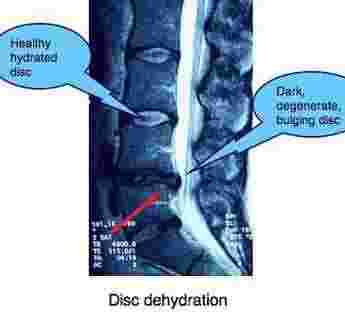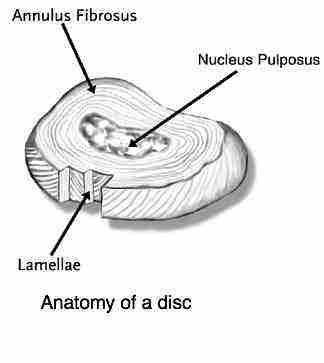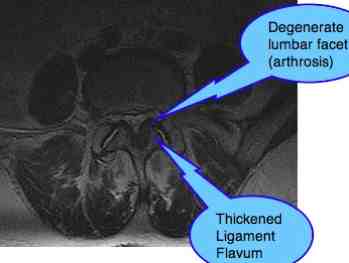- Home
- Why Chiropractic Help?
- Vertebral Subluxation Complex
Vertebral subluxation complex
Vertebral subluxation complex and the chiropractic adjustment go hand in hand; apologies for the pun.
Medicine has its magic bullet theories to justify its treatment methods. Chiropractic has the subluxation. Both have their uses, but they also have their weaknesses.
Just as it is now being realised inflammation cannot simply tackled with drugs and it is now acknowledged that fifty years of war on cholesterol has failed dismally with one in four Americans taking statin drugs, yet death from heart disease continues to rise; foods to reduce inflammation. Likewise research continues to find gaps in chiropractors' theories about the subluxation.
Here, a fine article on chiropractic's striving with its roots in the Vertebral Subluxation Complex.
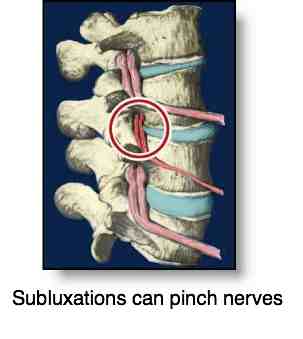
The VSC concept has been one of the fundamental components of chiropractic theory since the founding of the profession. A history of the evolution of subluxation and joint dysfunction concepts is provided from DD Palmer's original anatomic and vitalistic model through through his son BJ Palmer's model of blocked neurological impulses.
Charles A. Lantz, DC. PhD. Director of Research, Life Chiropractic College West, 2005 Via Barrett, San Lorenzo, California 94580-1368
An account of chiropractic concepts of Vertebral Subluxation Complex from the beginning, even before DD Palmer founded the practice of chiropractic, to the present involves a review of a wealth of historical, scientific, and clinical information. There is a growing body of evidence, from both within and outside the discipline, that supports many of chiropractic's basic concepts.
Evidence regarding the contribution of spinal joint derangement to a number of significant health problems becomes more compelling as more is learned. The role of manual procedures, especially as performed by chiropractors, becomes more prominent each year. A new environment without the overt ostracism of political medicine and a burgeoning research enterprise within chiropractic academia and practice are helping to poise the profession for greater contributions to the health care of society.
- Anti inflammatory drugs
- Foods to reduce inflammation
DD Palmer
DD Palmer is the father of modern chiropractic; he started us on the road to understanding the vertebral subluxation complex. Really though the profession goes back into the mists of time.
Vertebral Subluxation Complex
The term subluxation is a medical term meaning "less than a true dislocation". For chiropractors the term Vertebral Subluxation Complex took on a life of its own. One feature of subluxation that emerged early in its development was the almost unspoken idea that the subluxation was often "medically" subclinical. Typically, medical physicians overlooked the subtle clinical manifestations of subluxations. Medicine's official perspective was that there was no legitimate evidence of what chiropractors called "subluxation", and it simply did not exist. It therefore became a matter of policy to discredit the very existence of chiropractic, from fundamental concepts to clinical practice.
This perspective extended into the 1970s. Research into chiropractic
conducted by the medical community was so obviously biased that it had
little credibility, although it did have tremendous political appeal.
What little research chiropractors themselves engaged in was often
proprietary and rarely disseminated and scrutinized. Thus, chiropractors
built their practices in the shadow of medical dominance that depicted
them as charlatans, quacks, and unscientific cultists. The lack of
scientific credence was wielded by organized medicine against the
chiropractic profession in an attempt to "contain and eliminate"
chiropractic.
Probably one of the most important lawsuits directly
affecting chiropractors, lasting eleven years, ruled that the
American Medical Association was guilty of violating the Sherman antitrust
laws in its attempt to destroy chiropractic.
Vertebral Subluxation Complex: LA CAUSE CELEBRE
In the early formulations of the theory of vertebral subluxation complex and extending into contemporary times, the idea of subluxation has been linked with the idea of the chiropractic help 'adjustment', the uniquely chiropractic procedure directed at reducing subluxation. Because the vertebral subluxation complex concept emphasized a relationship between mechanical joint dysfunction and the establishment of nerve interference, chiropractic adjustment has often been equated to removal of "nerve interference." The subluxation is the "raison d' etre" of the adjustment.
In the simplistic, early twentieth century mindset in which the concept
vertebral subluxation complex was developed, subluxation was seen as the
"cause of all disease" or the "one cause" for which there was but "one
cure." This concept gave rise to an extensive proliferation of
chiropractic techniques and procedures for adjusting for the removal of
subluxation. Attacking the concept of vertebral subluxation complex, one
of chiropractic's central foundations, became an instrumental part of
the strategy to discredit chiropractic.
With continuing assault from organized medicine, chiropractors became more entrenched in their defense of the concept, for if there is no Vertebral Subluxation Complex, there is no need for an adjustment; no adjustment, no need for chiropractors.
Medical critics attacked the concept from an extremely narrow perspective, while chiropractic defenders interpreted the concept much more broadly. Since the idea of subluxation was first adapted by DD Palmer as a central conceptual focus of chiropractic, it has undergone continual refinement and development.
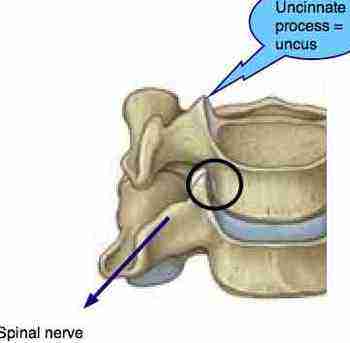
The origins of the Vertebral Subluxation Complex
The term Vertebral Subluxation Complex was not coined by chiropractic's founder, DD Palmer. Rather, it was a medical term adapted by Palmer to most closely describe the phenomenon that he experienced in his newly "discovered" clinical practice. Palmer stated, "I am not the first person to replace subluxated vertebrae, for this art has been practised for thousands of years."
Much of the controversy regarding the "Vertebral Subluxation Complex" may stem from the fact that the term already had a precise meaning in medical terminology. Arguments on both extremes ranged from claims that minor "subluxations" of vertebrae are not detectable or clinically significant, to claims that subluxations are measurable to absurd levels of precision and are the ultimate cause of all ills afflicting humanity.
Until recently, no amount of logic, reason, or evidence would sway the medical community and through it, the public regarding the validity or credibility of chiropractic clinical practice; it was pure and simple quackery, and until the mid 1970s, it was official medical policy to remove the cult's shield of legitimacy to combat and eliminate their brand of cultistic therapeutic nonsense.
Early definitions
DD Palmer proposed that the "subluxation of a vertebrae is a slight
deviation from its normal relation to adjacent vertebrae," [7] and this
is said to cause "an alteration and narrowing of intervertebral
foramina." With regard to adjustive procedures, "The Chiropractor places
vertebrae in line by hand, thereby removing impingements and returning
the nerves to their normal tonicity. Normal tension produces normal
functions, harmony and health, "
Two distinctly chiropractic conceptions regarding subluxations are:
- They are correctable by adjustive (manipulative) proceedures, and
- Subluxated vertebrae interfere with proper neurologic functioning.
In 1828, the concept developed of compression of nerves "as they issue
from the spinal marrow," resulting in "spinal irritation" as the
"immediate cause" of pain, nervous complaints, and poor health.
Throughout the mid- to late 19th century, medical authors referred
explicitly to subluxation.
"A vertebra is said to be displaced or luxated when the joint surfaces are entirely separated. Sub-luxation is a partial or incomplete separation: one in which the articulating surfaces remain in partial contact. This latter condition is so often referred to and known by chiropractors as sub-luxation.
The relationship existing between bones and nerves are so nicely adjusted that anyone of the 200 bones, more especially those of the vertebral column, cannot be displaced ever so little without impinging upon adjacent nerves. Pressure on nerves excites, agitates, creates an excess of molecular vibration, whose effects, when local, are known as inflammation, when general, as fever.
THE DEVELOPER OF CHIROPRACTIC
The concept of subluxation developed by DD Palmer's son, BJ Palmer, was distinct from that of his father. According to BJ Palmer, a subluxation represented a displaced bone that impinged on a nerve, thus interfering with the transmission of vital nerve energy (or, more specifically, the transmission of mental impulses.
A clear delineation was made between a simple misalignment and a true subluxation, although no formal evidence was presented to justify such a distinction, BJ Palmer thus conceived that vital energy originating in the brain was transmitted from above, down, inside out. Thus an impingement near the origin of the transmission for example, the brainstem at the level of the atlas ring; would affect the whole system. The concept was appealing in its simplicity.
Perhaps the most widely quoted early definition of subluxation was that provided by RW Stephenson's 1948 chiropractic text Book; a subluxation is the condition of a vertebra that has lost its proper juxtaposition with the one above or the one below, or both; to the extent less than a luxation; which impinges nerves and interferes with the transmission of mental impulses.
SEEING IS BELIEVING
To more precisely determine the location and direction of subluxated vertebrae, radiographs were utilized to evaluate osseous misalignment. At the time that DD Palmer "discovered" chiropractic, there was no radiologic definition of Vertebral Subluxation Complex, since the first clinical radiographs had not yet been taken. However, the term was readily found in the medical literature and detined in medical lexicons. Radiographs continue to be a clinical tool used by many chiropractors for documenting the existence and location of subluxation pathologies.
It is perhaps serendipitous that chiropractic was "discovered" in the
same year as X-radiation. Certainly the coincidence was not lost on
either the founder or the developer of chiropractic, as one of the first
clinical X-ray units was installed at the Palmer Clinic in Davenport,
Iowa, near the turn of the century. Radiographs allowed the chiropractor
to "see" and show others the misalignment.
The incorporation of radiographs into diagnostic procedures in chiropractic led to the development of systems of X-ray markings for "precise localization" of the subluxation and calculation of the extent of misalignment.
Essential support for the concept of radiographic subluxation was provided by a medical physician named Hadley who, between 1935 and 1955, described in detail radiologic accounts of osseous vertebral subluxation complex and discussed subsequent nerve impingement and alterations in neurologic function. Such evidence provided considerable ammunition for chiropractic practitioners and theoreticians.
Nerve interference
One aspect of Vertebral Subluxation Complex that distinguishes it from classic medical subluxation is the existence of so-called "nerve interference." Although the DD Palmer's definition of subluxation stressed the "bone out of place", rather than joint disfunction, emphasis was also given to pressure on, or irritation of nerves, leading to increased nerve tension.
According to DD Palmer, the nervous system
as well as other vital tissues existed in a state of vibration. Nerves
were considered to be under a certain amount of "tension," similar to
the strings of a piano or guitar. Metaphorically speaking, when the
strings are tuned properly, the instrument plays harmoniously; when they
are out of tune, there is dissonance or disharmony (dis-ease).
Vitality, or health, represented a tone that was harmonious with a vital
principle that Palmer referred to as "Innate Intelligence." This tone
was transmitted to all tissues via the nervous system, and any
interference with this transmission led to a disharmony and,
subsequently, disease.
Eminent chiropractor and researcher Dr J. Janse stated that "The Chiropractic adjustment helps to remove nerve impingement at the intervertebral foramen", even though he acknowledged that there was no tangible evidence of this phenomenon; he defended his position by stating that the assertion finds its "support in logic and anatomical reasoning." The concept of nerve interference remains central to many approaches to chiropractic practice and is primary in some of the more traditional and conservative perspectives.
ASIDE: Modern research has vindicated many of Dr Janse's opinions regarding the Vertebral subluxation complex.
In 1971, neurologist and chiropractor Haldeman and Drum reviewed the relationship between compression lesions and the concept of subluxation and suggested that there was sufficient evidence to verify the existence and importance of the compression subluxation. Many of the theories supporting the effectiveness of chiropractic revolve around the "neurological connection."
Anatomically and physiologicaI1y, such a relationship can be readily characterized. Chiropractors adjust vertebrae, presumably restoring normal position or functional capacity. It is a simple extension of logic to postulate that the segmental nerves, coursing within the intervertebral canal (IVC) traversing between adjacent vertebrae could be compressed by a subluxated vertebra.
The disc-wedge hypothesis
In 1934 medical researchers Mixter and Barr promulgated the concept of a herniated disc as a "cause" of low back pain; this concept became the pathophysiologic basis of orthopedic surgical intervention for low back pain. Many of the same undercurrents of information infuencing Mixter and Barr likely infuenced chiropractor Gonstead to develop the disc-wedge hypothesis of vertebral subluxation complex.
The intervertebral disc (IVD) consists of a gelatinous nucleus pulposus surrounded by tough sheets of annular fibers. According to Gonstead, the nucleus pulposus served as a pivot for the tilting of vertebrae, a sort of hydraulic ball bearing. It was the shifting of the nucleus that caused the vertebrae to become wedged and therefore subluxated: "subluxation is a disorder of the disc."
The wedging of the vertebrae
leads to disc bulging on the side of the closed wedge, and it is the
bulging disc that places pressure on the nerve roots in the IVF or
neural canal.
One consequence of this wedging is presumed to be a loss of segmental mobility. The vertebra is considered fixed, and the area of reduced mobility between the fixed vertebra and subjacent vertebra has been termed biomechanically as a fixation. For every fixation, there are apparent areas of compensatory hypermobility that manifest similar types of misalignment as the subluxated vertebrae. Consequently, it was an important distinction in the Gonstead system that subluxations themselves could not be seen on radiographs; there had to be independent evidence of nerve interference for an abnormality to qualify as a Vertebral Subluxation Complex.
Radiographs were merely confirmatory of the existence of the subluxation and provided information regarding the direction in which the adjustive force would have to be applied. To uncquivocally identify thc location of the subluxation, "emphasis is placed on finding the nerve involved."
Considerable emphasis in Gonstead theory was placed on the role of edema and inflammation, but only from a mechanical perpective. Edematous swelling was seen to lead to nerve root compression. "A subluxation occurs when two osseous structures become misaligned to the degree where interarticular protrusion from intra-articular swelling produces compression of nerve fibers."
Growing evidence
In 1921 a medical doctor, Henry Winsor, published an article describing a correlation between visceral disease and spinal segmental (sympathetic) lesions. Even in medicine, as late as the early 1950s, Hadley was promoting similar "spinal lesion" mechanisms to explain visceral degenerative processes.
After about 1955, the term subluxation largely disappeared from medical publications, and when it did appear, it was used only in a very narrowly defined radiological context. Although the focus and terminologies have changed today, scientists continue to search for evidence of "spinal lesions".
In response to the volume of new biomechanic, neurologic, endocrinologic, and wellness research findings that are becoming available, chiropractic theorists are incorporating new concepts and terminologies into subluxation and adjustive (manipulative) procedures models.
The "modern" era
Currently, controversy over the term Vertebral Subluxation Complex continues, although its character has changed. Some of the controversy is fueled by the narrow medical definition of radiographic or anatomic subluxation as resulting from potential segmental instability, for which the application of "manipulative forces" is actually contraindicated.
Still, support for the concept of subluxation appears from both within and outside the profession. The work of De Boer, Verbon et al, Nansel et al, Sato and Swenson, and thers have pointed out new paths for chiropractic research in exploring neurologic relationships inherent in somato-visceral pathways.
Chiropractic help
Chiropractic help is the modern science involving a proper understanding of orthopaedics, neurology and inflammation in the body.
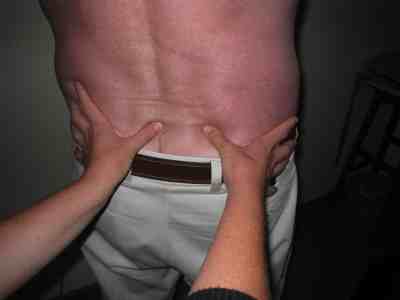
In 1906 Smith et al were apparently the first to characterize subluxations other than bones out of place, but as a dysfunctional state of motion of adjacent vertebrae. A reasonable concept of joint dysfunction is that of a fixation or restricted motion between adjacent vertebrae. Such a perspective, largely ignored for several decades, stimulated the development and refinement of motion palpation by a Belgian chiropractor, Henri Gillett.
This system was further refined by Faye and developed into a prominent chiropractic technique system in North America. Motion became a preeminent focus of Faye's model of vertebral subluxation complex and manipulation. Although this work was abstracted from earlier work by Janse, it was Faye who popularized the idea and organized the "motion" model, or rather lack of motion, into component parts.
The comprehensive contemporary model of the vertebral subluxation complex does not attempt to identify a single lesion or pathophysiologic entity to characterize as a subluxation. VSC incorporates multifactorial involvement from elements of each of the model's tissue-level components. Kinesiologic abnormalities are seen to be central in the concept of subluxation and are provided a position of prominence in the model; immobilization is seen as a primary but not exclusive element in specific subluxations.
Unique patterns of involvement are discernible in various types of vertebral subluxation complex; for instance, immobilization and inflammation are commonly seen as being involved in sacroiliac joint "lesions" or subluxations and may give rise to radicular problems. Nerve impingement by IVDs causing lower back and leg pain is yet another discernible class of subluxation potentially amenable to manual chiropractic methods.
Frank trauma with edema, as occurs after a blow from a blunt instrument or from sprains and strains, is also recognized as a class of subluxation, as are whiplash-type injuries. Whiplash Chiropractic ...
Degenerative disc disease and facet syndrome are additional medical diagnoses that represent classes of what chiropractors identify and treat as subluxations.
Looking ahead
It is the nature of theories and models to be dynamic, forever evolving as knowledge and understanding grow. As with all theoretical models, concepts of chiropractic clinical practice are also imperfect. The fact that chiropractic models continue to exhibit limitations and imperfections is not surprising. To suggest that chiropractic practice is without value in the absence of definitive "proof" is naive and perhaps even arrogant. Whenever people see things that they do not understand, theories will evolve to explain such things.
A tremendous amount of work remains to be done to refine the concepts that underpin the practice of chiropractic.
In the past, chiropractic has relied on research from other fields to substantiate its own theories. This is a result of the academic isolationism that grew out of organized medicine's policies to "contain and eliminate" the chiropractic profession, as well as chiropractic's long tradition of scientific neglect. Chiropractors, therefore, exerted no control over directions that medical research took (the specific questions asked, the design of research, etc).
Currently, however, the foundations of chiropractic research are growing, and chiropractors are increasingly recognizing the need to contribute to the scientific knowledge base, examining basic mechanisms of subluxation pathology, manifestations of the "subluxation syndrome", and the processes involved in correcting these lesions.
CONCLUSION
Chiropractic theory grew directly out of a working relationship between doctor and patient. One could say that the concept of subluxation was created to justify and explain the adjustive procedure utilized to correct it. The situation is similar for any clinical discipline, Science is a tool to be utilized and applied to the understanding of clinical experience. From a clinician's perspective, there is no greater need than to understand what he or she is doing and how to make it better.
If the concept of 'vertebral subluxation complex' cannot be placed in a physical perspective (ie, anatomy, physiology, epidemiology, biochemistry), then the profession may experience limitation in its true growth. Chiropractic is increasingly in the spotlight of public awareness.
With such "celebrity" status comes greater scrutiny and increasing demand for accountability from the public chiropractic serves. Although clearly not all questions have been answered, the tools and resources needed to obtain answers are more available to chiropractors than in earlier decades. The playing field has never been more favorable. However, with victory and recognition come responsibility.
The responsibility of the chiropractic profession is to provide answers for some very important questions. Chiropractic needs a solid foundation on which to build a sound clinical practice.
The current direction of the development of the vertebral subluxation complex may help to define and anchor that foundation. Although it is both incomplete and imperfect, 'subluxation' still offers a common conceptual model to describe the theory and practice of chiropractic. Attention and focus devoted to a comprehensive approach to VSC model building can serve as a common frame of reference for chiropractors everywhere well into the profession's second century.
This better health tingling in the arms and hands case file makes for interesting reading.
Useful links
- Home
- Why Chiropractic Help?
- Vertebral Subluxation Complex
- Vertebral Subluxation Complex @ Bay Area wellness
Did you find this page useful? Then perhaps forward it to a suffering friend. Better still, Tweet or Face Book it.
